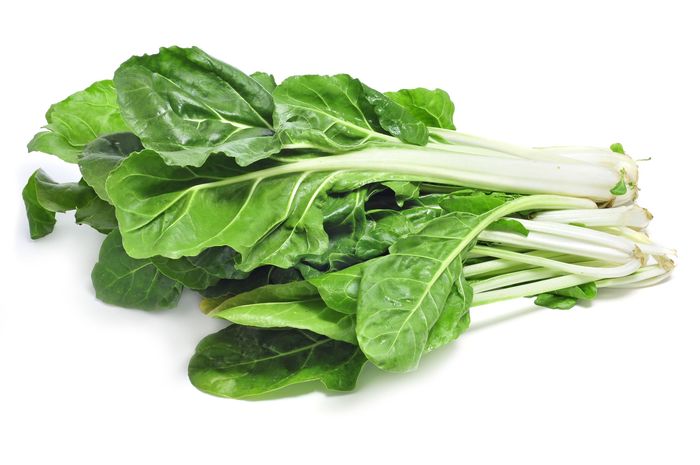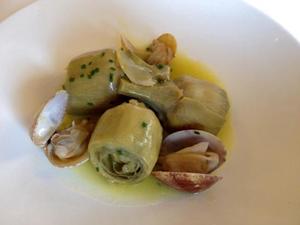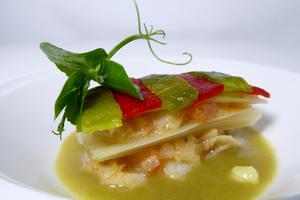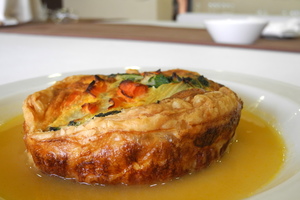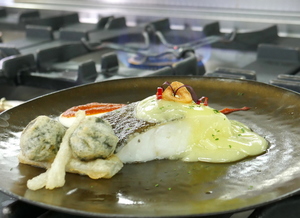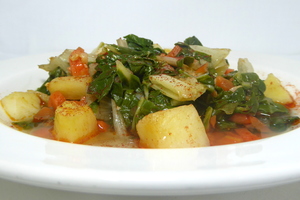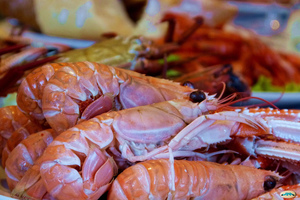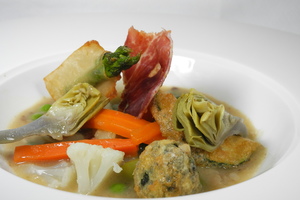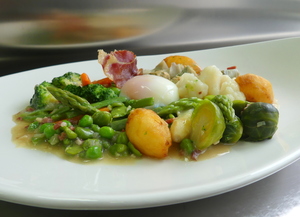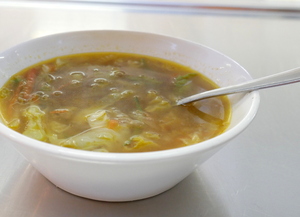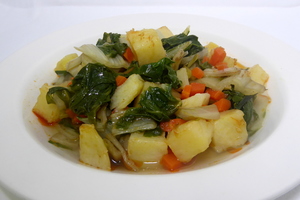Swiss chard
Swiss charch is a leaf green vegetable belonging to the family Quenopodiaceae of the species Beta Vulgaris.
Its leaves are the edible part of the vegetable. They have an oval shape, gently heart-shaped and marked nerves that are born from the central part of the stem. The leaves are in uniform colour covering the full range of green, depending of the variety.
The stems (called cladodes) are long, broad and fleshy; in white, yellowish and even red shade.
The high water content of the Swiss chard confers little amount of carbohydrates, proteins or fat, providing low energy value and making it a recommended food for elaborating weight loss diets. Besides, It is a product very rich in regulatory nutrients like fiber, mineral salts or vitamins.
Winter is the ideal time to buy Swiss chard because it is the time where the leaves reach their darkest shade and contain the highest number of nutritional properties.
The recipes are many and varied, being able to find this vegetable in soups, salads, sauté with garlic, stuffed with bechamel, battered, in stews or as a garnish of meat and fish.
Cooking of the leaves is lower than in the cladodes, so they should be boiled separately or in two stages.
-
Type of dish
- Beers
- Cocktails
- Breakfasts and brunch
- Burguers
- Juices, milkshakes and beverages
- Shellfish
- Bread and pastries
- Pizzas, patty
- Dessert
- Pasta
- Sándwich
- Pastries
- Finger foods
- Ice creams and sorbets
- Legumes
- Salads
- Eggs
- Patty
- liqueur
- Harvard plate
- Main course
- Meats
- Fish
- Birds
- Vegetables
- Soups and creams
- Rices
- Coffee, chocolate and infusion
- Cheeses
- Appetizers and canapes
- Temperature
- Cuisine type
- Additional culinary preparation
- Conservation technique
- Seasonal recipes
-
- Aromatic herbs
- Beverages
- Big game hunt
- Bread and pastries
- Canned goods and pickles
- Cereals
- Condiments, spices and additives
- Cooked, salted, preserved and cold meats
- Dried fruits and nuts
- Dry pulses
- Edible oils and vinegars
- Eggs and derivatives
- Feathered game hunt
- Fish cuts
- Fishes
- Insects
- Kitchen and bakery tecniques
- Kitchen and bakery utensils
- Meat cuts
- Meats
- Milk, cream and derivatives
- Mushrooms
- Offal
- Pasta, rice, flour and derivatives
- Poultry
- Seafood
- Service techniques
- Service utensils
- Vegetables cuts
- Vegetables, fruits, tubers and seaweed

